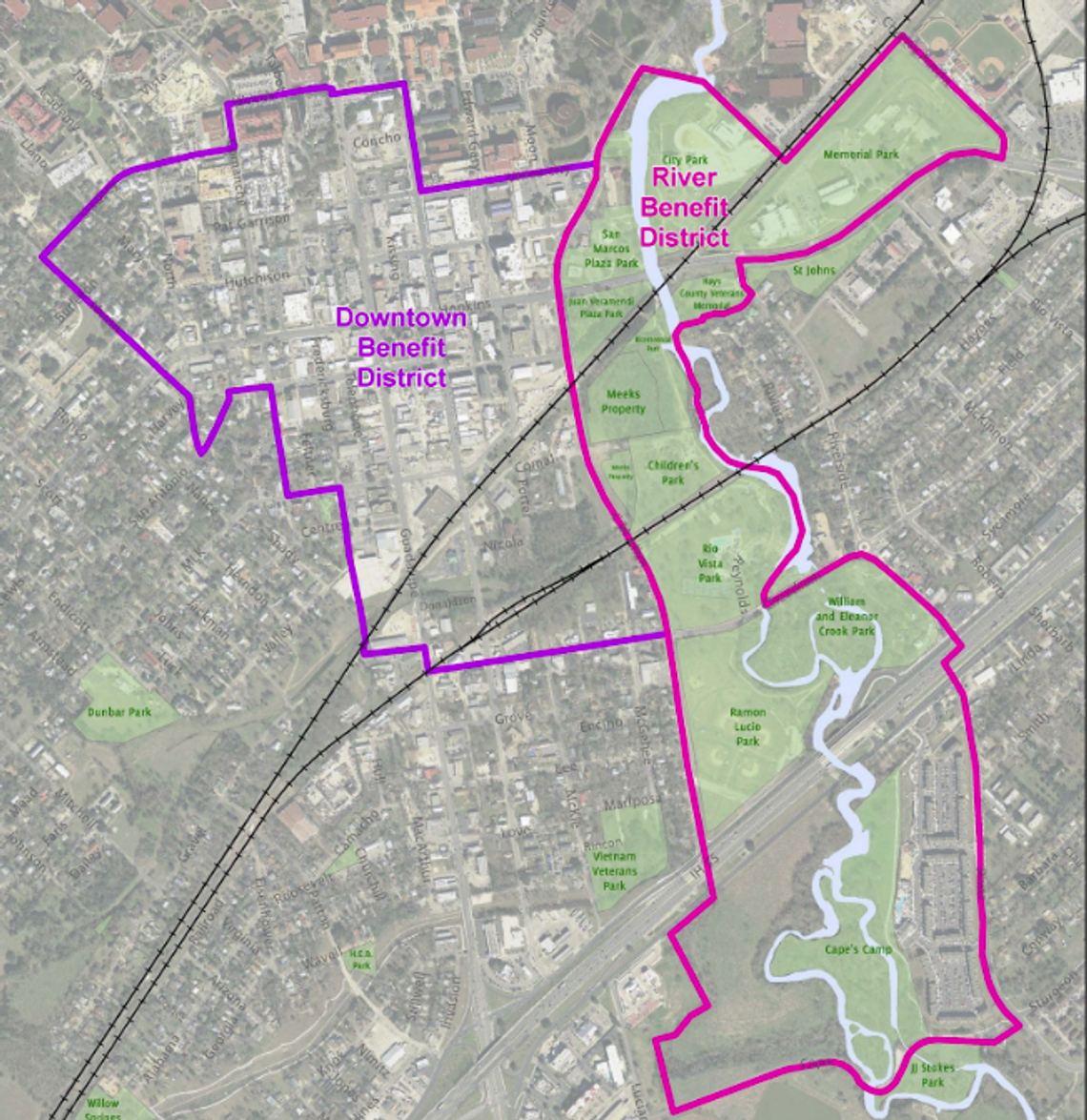Paid on-street parking is coming to San Marcos as part of a plan to increase parking availability and bring in revenue to reinvest in the downtown area and city parks. Kevin Burke, economic development and downtown administrator for the city, gave a presentation on the city’s parking management plans at a public forum hosted by the San Marcos Chamber of Commerce on Wednesday.
Burke pointed out that the city has been discussing downtown parking for a while.
“We started with the 2008 Downtown Master Plan. The master plan act says pretty specifically that we should consider paid parking” he said.
The city hired consulting firm Kimley Horn to come up with a downtown parking initiative that council approved in 2012. Then, in 2016, the city re-hired Kimley Horn to develop the implementation plan for on-street parking. Last year, the city council approved the Parking Program Framework Plan, which lists “big-picture goals” and some primary action items related to parking management downtown.
The city’s next steps are hiring a parking and mobility manager, appointing a parking management advisory board and hiring a third-party parking management firm. The first two of those steps are already under way, Burke said; council approved the hiring of a parking manager, and at its last meeting the council appointed members of the parking advisory board.
Another step in the plan is the creation of parking benefit districts to encourage support for on-street parking. The city is looking to establish two such districts — one downtown and one consisting of the city’s parks along the river. A percentage of net parking revenue will be reinvested in the areas where it was generated. Burke said it will be up to council as to how much parking revenue will be dedicated to the parking benefit districts and what the revenue will be used for, but it likely will go toward projects like sidewalks, landscaping and transportation.
Burke emphasized that the plan will not take effect all over downtown at once — the city is taking a phased approach. Kimley Horn’s recommendations are to begin on-street paid parking in the area between San Antonio Street and the Texas State University campus, from 9 a.m. to 6 p.m. Mondays through Fridays. The city intends to keep the current two-hour time limit in paid parking areas with an initial rate of $1 per hour.
The program is intended to be flexible enough to change parking regulations based on demand, Burke said. For instance, with the two-hour time limit, he said, “The primary goal is to increase turnover” and get more people downtown.
As far as payment methods, the city is looking at multi-space kiosks instead of the old-fashioned meters placed at every parking space. Drivers will be able to go to the kiosks and enter their license plate numbers to pay. The city is also looking at smartphone apps to allow drivers to pay for parking that way and receive reminders when their time is almost up. Although Burke said the city wants to avoid the electronic version of meter-feeding, drivers could be presented with options to purchase another 30 minutes of parking for a higher rate. Drivers who keep their cars parked for longer than the time they have paid for would, just as now, get tickets.
Burke said that businesses whose customers are often parked downtown for more than two hours — hair salons and tattoo parlors, for example — have told the city that the two-hour limit does not work for them. Moreover, he said, there are 2,400 employees in downtown San Marcos, and many of them need to park close to their workplaces for much longer than two hours. To address those needs, the city is looking at creating on-street permits in lower-demand areas, possibly designating 10-hour zones for employees, allowing parking validation for customers who are at a business for more than two hours and other measures. Meanwhile, to prevent people from parking for free on the streets in neighborhoods adjacent to downtown, the city could use the Resident Parking Permit Program if enough residents and/or property owners demand it.
“It’s not been our intent to just flip the switch one day and then everything will be paid parking downtown,” Burke said. “… And before we do anything which we know is going to have a major impact on all of our stakeholders — like business owners, property owners, students, guests, employees … we want to be really clear about the changes that are happening and work with everybody to make sure that we’re accommodating them.”
Burke said that the parking management program will go before city council for a vote on March 5. There will be public hearings on the issue before a final vote, he said, so members of the public have opportunities to ask questions and voice concerns.
Wednesday’s discussion was the first in a series of monthly public forums hosted by the San Marcos Chamber of Commerce.







